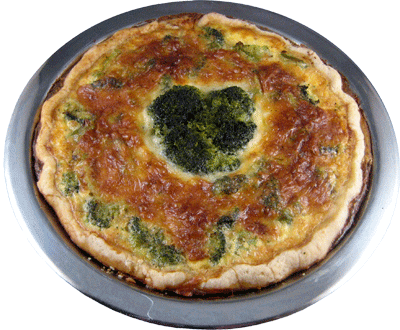 Why did I choose that article title? Because using a CRM is exactly like eating broccoli…It’s. Just. No. Fun.
Why did I choose that article title? Because using a CRM is exactly like eating broccoli…It’s. Just. No. Fun.
I’ve tried. I’ve really tried but there’s just no way to make entering leads, accounts, contacts and such be fun. It. Just. Isn’t.
So there…I said it. Me, a partner in a firm that specializes in implementing relationship management solutions a la Salesforce.com and whose very same company uses Salesforce as the backbone of our operations.
If there’s anyone who disagrees with me, shout out -- while the rest of us agree to my above sentiments. There’s no doubt either, that the more “creative” folks in “creative” functions – like sales and marketing – will rebel against using them because of the discipline required to create new records and maintain activity histories.
And guess what?
Use your CRM anyway for the same reason you should eat broccoli. CRMs are good for you and will help you keep your business <erm> well-greased.
Then why use a CRM?
Here’s why. If you will discipline yourself and your staff to dutifully keep your contacts, opportunities, and activities up-to-date in your CRM, then you will save enormous amounts of time later from your efficiency and you’ll gain everything from a high-level down to a granular level view of your business results.
For one thing, you can keep other co-workers up-to-date on your activities without investing time in chasing after them. For example, at Intellicore Design Consulting, we’re fanatical archivists, we log all our activities with a prospect, customer, or vendor. The benefit is a quick and easy way to keep up-to-date on each other’s activities – and puts us ahead of the game to provide customer service.
Additionally, because we save copies of our written communications – especially proposals – in the contact or opportunity records, we can easily see exactly what we provided to the customer or prospect.
Then there’s the beauty of automation.
Let me give you an example. Within our own Intellicore Design kingdom, we’re layering in automation to our own business installation of Salesforce.com. Check this out. Our proposal process is about as automated as possible.
We started with a template design we use and a partial boilerplate. This is information we tend to include in every solution-specific solution and, in our proposal template, we’ve broken them into indexed sections.
In Salesforce, we have each a content blurb for each of these boilerplate, indexed sections.
When it’s time for moi to prepare a proposal, I pick and choose the components I want to include in the proposal based on what the prospect is interested in. We merge the contact information and some of the account description into the proposal. Viola! About 60% – 80% of the proposal content generation is completed through automation.
That also means I spend the most time on the most important part of the proposal – the prospect’s business needs, summarizing how our solution will meet their needs, and determining pricing.
We’ve cut down the time to prepare a proposal from a half a day or more to about 1-2 hours, depending on the depth of the proposed solution. Translation – we have the potential to earn a higher profitability per contract, and I have more time to invest in other sales and marketing activities that have the potential to lead to more proposals and more contracts.
It’s a beautiful thing.
Summary
 So yeah, it’s a roaring boar entering data into our Salesforce system, just like it is in any CRM.
So yeah, it’s a roaring boar entering data into our Salesforce system, just like it is in any CRM.
Know what’s not boring?
Running pipeline reports and seeing all our prospect opportunities tally up, all visible-like because we suffered through the boredom of creating the records in the first place.
That, folks, is the cheese you pour over the broccoli to make it more tasty. More tasty indeed.

